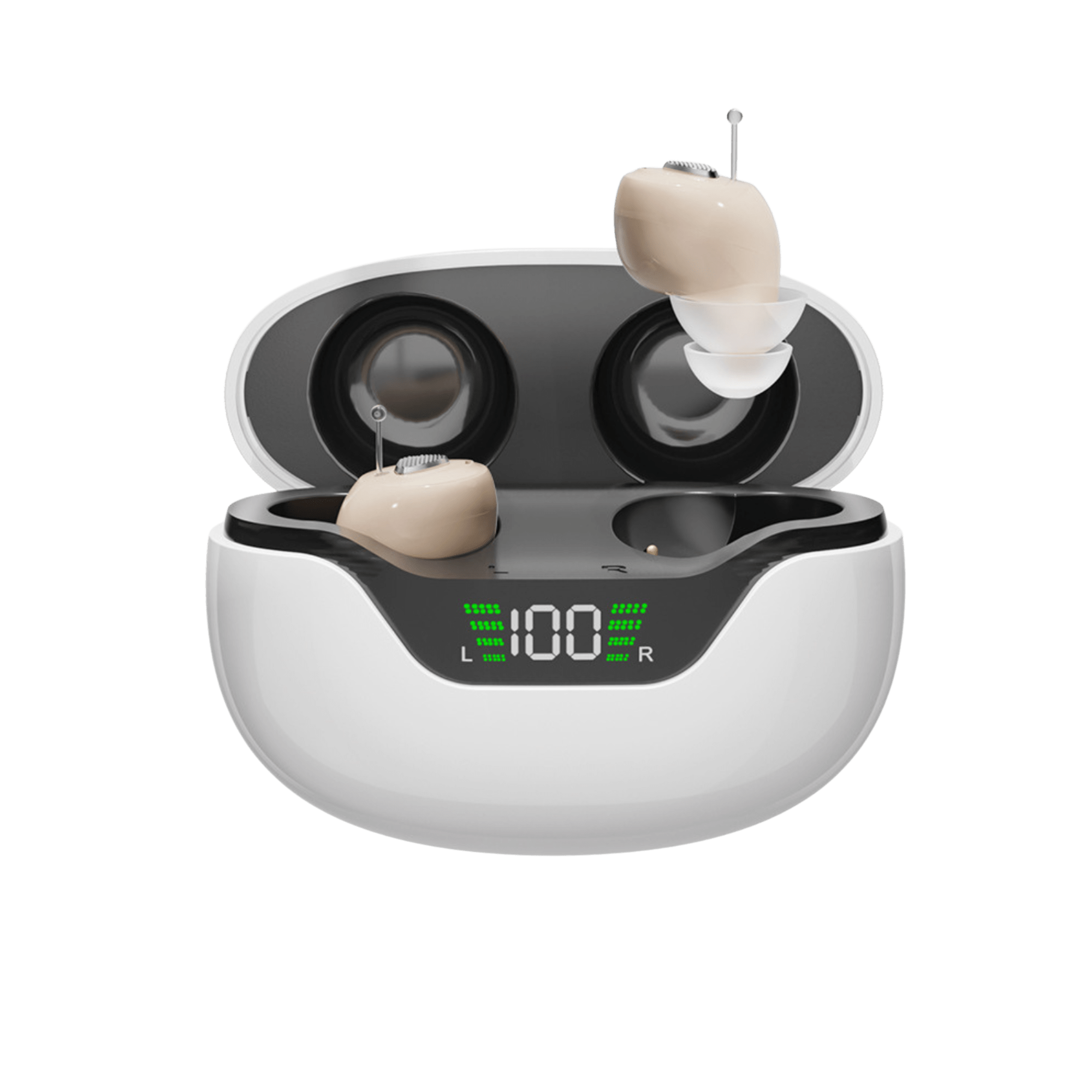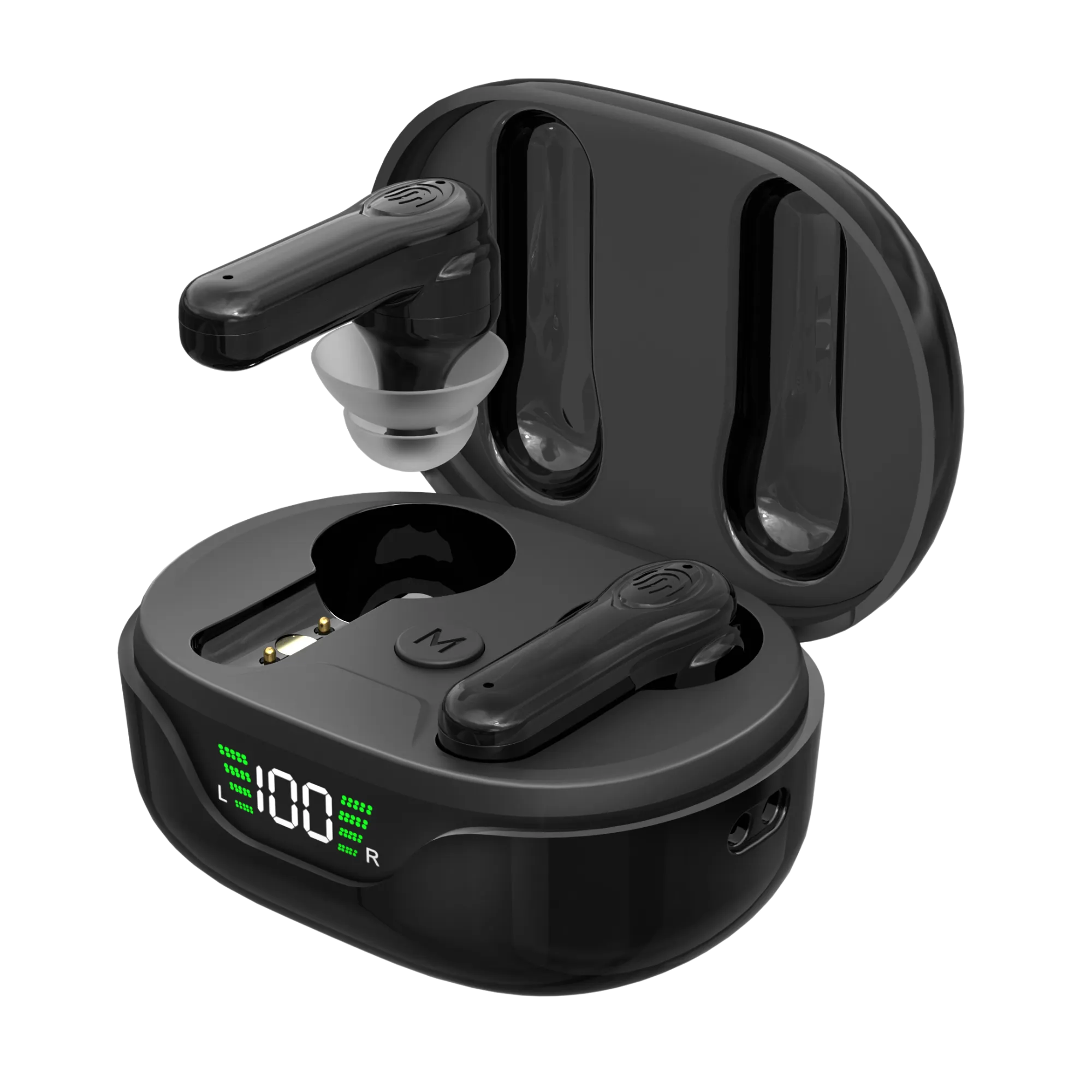Hearing loss affects nearly 48 million Americans, with prevalence rising sharply among older adults; about one in three people aged 65–74 and nearly half of those over 75 experience some degree of impairment. Left untreated, hearing loss can erode quality of life, leading to isolation, communication difficulties, and even increased risk of dementia.
Cost is the biggest barrier. In 2025, prescription hearing aids sold through clinics average $3,000–$8,300 per pair once fittings and adjustments are included. That’s why many Medicare-eligible seniors ask: Does Medicare cover hearing aids? Unfortunately, the answer is still no.
This guide explains Medicare’s role, why coverage gaps persist, and most importantly, why direct-to-consumer solutions like Panda Hearing have become the smarter, faster, and more affordable choice.
Table of Contents
- Understanding Medicare and What It Covers
- Hearing Aid Coverage Currently Available
- How to Get Hearing Aid Benefits
- Investigating Alternative Hearing Aid Coverage Options
- The Importance of Routine Hearing Exams
- Hearing Aid Technological Advancements
- Hearing Aid Upkeep and Care
- Overcoming the Stigma of Hearing Aids
- The Consequences of Untreated Hearing Loss
- Conclusion
Understanding Medicare and What It Covers
Medicare is a federal health insurance program serving over 65 million Americans, primarily those aged 65 and older, as well as younger individuals with disabilities or end-stage renal disease. It comprises four main parts:
| Part | Description | Key Hearing-Related Coverage |
|---|---|---|
| Part A (Hospital Insurance) | Covers inpatient hospital stays, skilled nursing, hospice, and some home health care. Premium-free for most. | No routine hearing coverage; may cover diagnostic tests during hospital stays if medically necessary. |
| Part B (Medical Insurance) | Covers outpatient services, doctor visits, preventive care, and durable medical equipment. Monthly premium ~$185 in 2025 (income-based). | Covers diagnostic hearing and balance exams ordered by a doctor for medical treatment (e.g., 80% after deductible; you pay 20%). Excludes routine exams and hearing aids. |
| Part C (Medicare Advantage) | Private plans bundling A, B, and often D benefits; may add extras like hearing aids. | Varies by plan; 97% offer some hearing benefits in 2025, including exams and partial/full aid coverage. |
| Part D (Prescription Drugs) | Covers medications; optional add-on. | No direct hearing coverage, but may include ear-related drugs. |
Traditional Medicare (A and B) explicitly excludes routine hearing aids and exams, a policy rooted in 1965 legislation viewing them as non-medical. Exceptions include prosthetic devices like bone-anchored hearing aids (BAHA) or cochlear implants under Part B when surgically implanted. In 2025, bipartisan bills like the Medicare Hearing Aid Coverage Act (H.R. 500) seek to eliminate this exclusion, potentially effective January 2026 if passed, alongside a mandated GAO study on access gaps. Until then, alternatives are essential.
Hearing Aid Coverage Currently Available
As of 2025, Original Medicare remains unchanged: no coverage for routine hearing aids or fitting exams, forcing beneficiaries to pay full out-of-pocket costs; averaging $4,672 per pair. This gap affects access, with only about 30% of those who could benefit using aids. However, Medicare Advantage (Part C) plans; enrolling over half of beneficiaries; bridge this divide. In 2025, 97% include hearing benefits, up from prior years due to CMS rules mandating clearer plan notifications. Coverage often includes annual exams ($0–$50 copay) and allowances for aids ($500–$2,000 per ear), though limits apply (e.g., one pair every 2–3 years).
| Plan Example | Hearing Exam Coverage | Hearing Aid Allowance | Network Notes |
|---|---|---|---|
| Aetna Medicare (Various HMOs/PPOs) | 1 routine exam/year ($0 copay) | Up to $1,000/pair every 2 years via NationsHearing network | In-network only; includes fitting. |
| Humana Medicare Advantage | Diagnostic exams (Part B rules) + routine in some plans | Partial/full via plan extras; varies by ZIP | Often bundles with vision/dental. |
| UnitedHealthcare (UHC) AARP Plans | 1 exam/year; broad network | $1,000–$2,000 allowance/pair; 3-year warranty | OTC aids may qualify; out-of-network limits. |
Compare plans at Medicare.gov using your ZIP code: benefits aren't uniform, and some require in-network providers.
How to Get Hearing Aid Benefits
Direct Medicare coverage is limited, but these strategies can unlock support:
- Medicare Advantage Plans: Switch during Open Enrollment (Oct 15–Dec 7) for 2026. Look for plans with $1,000+ allowances; 99%+ offer at least one supplemental hearing benefit. Use CMS tools for transparency on extras.
- Medigap (Supplemental Insurance): Fills Original Medicare gaps (e.g., Part B copays for diagnostics) but rarely covers aids. Useful for exam costs (~$100–$200).
- Medicaid (Dual Eligibles): If low-income, Medicaid covers aids in most states for adults, varying by eligibility. All states cover children; adults get 1–2 pairs every 2–5 years, often full cost. Examples:
| State | Adult Coverage | Child Coverage | Limits |
|---|---|---|---|
| California | Full aids every 3 years if medically necessary | Full, unlimited exams | Income <138% FPL. |
| Florida | 1 new aid/ear every 3 years for moderate+ loss | Full for profound loss | Repairs post-warranty. |
| New York | Full for low-income adults | $1,000/ear every 2 years until age 15 | Vocational needs prioritized. |
| Texas | Varies; often partial for adults | Full until 18 | State-specific apps required. |
Check Medicaid.gov or your state agency.
- Nonprofits and Assistance: Programs like Lions Club (recycles aids), Hearing Loss Association of America (HLAA) grants, and Sertoma's Hearing Aid Project provide free/low-cost devices. Apply via HearingCharities.org; waitlists common.
Investigating Alternative Hearing Aid Coverage Options
Beyond Medicare:
- VA Benefits: Eligible veterans get free aids, exams, batteries, and repairs via 650+ sites: no copays for service-connected loss. Enroll at VA.gov; teleaudiology available for remote fittings.
- Employer/Retiree Plans: Pre-65 or retiree coverage may include 50–100% aid reimbursement. Contact HR; some extend post-Medicare.
- Discounts and Retailers: Costco ($1,500–$2,500/pair, in-network for many MA plans), OTC aids ($200–$1,000/pair for mild loss), and financing (0% interest via CareCredit). Manufacturers like Phonak offer bundles with trials.
The Importance of Routine Hearing Exams
Even without aid coverage, annual exams (~$100–$200) detect progression early, preventing complications. Medicare Part B covers diagnostics if doctor-ordered; MA plans often add routine checks. Early intervention improves outcomes and consult audiologists for personalized baselines.
Hearing Aid Technological Advancements
2025 brings AI-driven leaps: real-time noise cancellation, Bluetooth/Auracast streaming, biometric health tracking (e.g., heart rate), and neural processing for natural sound (e.g., Phonak's Neuro Sound 2.0). Devices are smaller, rechargeable, and eco-friendly, with AI adapting to environments (e.g., tracking 6 speakers in noise). Consult pros for fits; trials (30–60 days) standard.
Hearing Aid Upkeep and Care
Maximize longevity (3–7 years) with daily cleaning, battery swaps (or recharges), and humidity storage. VA/MA often covers accessories; professional cleanings quarterly. Follow manuals to avoid $200–$500 repairs. ((Unlike other brands that charge for every adjustment or service, Panda Hearing includes support at no extra cost.))
Overcoming the Stigma of Hearing Aids
Stigma tied to ageism and vanity; delays 80% of users, but modern designs (invisible, stylish) and education combat it. Strategies:
- Reframe Positively: View aids as empowerment tools, like glasses, now fashionable.
- Build Support: Join HLAA groups; share stories to normalize.
- Educate Networks: Discuss openly; clinicians can emphasize benefits over "handicaps."
The Consequences of Untreated Hearing Loss
Untreated loss correlates with 2–5x dementia risk, social isolation, depression, and $22,000+ higher 10-year healthcare costs. 2024–2025 studies (e.g., 1.5M participants) link severity to cognitive decline; aids may delay onset by years. Prioritize intervention for holistic health.
Why Medicare Falls Short
Medicare Parts A and B provide no coverage for routine hearing aids or fitting exams. These exclusions date back to 1965, when hearing aids were considered “non-medical.” Even today, Original Medicare pays only for diagnostic tests ordered by a physician, never for the devices themselves.
Medicare Advantage (Part C) is better, with 97% of plans offering some hearing benefit in 2025. But even then, coverage often caps at $500–$2,000 per ear, available only every 2–3 years and usually tied to in-network providers. That leaves seniors paying thousands out-of-pocket.
Pending legislation may eventually expand benefits, but nothing changes until at least 2026.
Why More Seniors Are Skipping Insurance and Buying Panda Hearing
Instead of waiting for laws to change, or navigating restrictive Medicare Advantage plans, thousands of seniors now buy hearing aids directly online. Panda Hearing (pandahearing.com) makes this possible with medical-grade, FDA-cleared devices shipped straight to your door.
Unlike clinic-fitted brands, Panda Hearing aids are:
-
FDA-Cleared & Safe – All models meet U.S. standards for quality and reliability.
-
Affordable – Priced at just $299–$1,099 instead of $3,000–$8,000 per pair.
-
Fast & Convenient – Free 3-day U.S. shipping; no waiting weeks for appointments.
-
Risk-Free – 45-day no-questions-asked return policy.
-
Easy to Use – Every model is pre-programmed and ready right out of the box; no audiology visit required.
-
Self-Hearing Test Option – The Panda Quantum model includes an app that lets you personalize sound at home.
-
Rechargeable Power – Long-lasting lithium batteries with up to 35 hours per charge.
-
Smart Features – Noise reduction, Bluetooth streaming, and multiple listening modes.
-
Discreet Designs – Nearly invisible in-ear or comfortable behind-the-ear styles.
-
Trusted Provider – Operated by Panda Innovations Limited, with secure checkout and verified customer reviews (4.8/5 average).
The Bottom Line
Medicare isn’t paying for hearing aids in 2025. Medicare Advantage helps a little, but coverage limits, in-network restrictions, and high out-of-pocket costs still leave most seniors frustrated.
That’s why more and more people are skipping the red tape and ordering directly from Panda Hearing. With FDA-cleared devices, fair pricing, free fast shipping, and no need to ever step foot in an audiologist’s office, it’s simply the easiest path to better hearing.
Don’t wait for Congress. Don’t overpay at a clinic. Visit pandahearing.com today, choose the model that fits your lifestyle, and enjoy clear hearing again in just 3 days.
Last updated September 2025. Coverage subject to change; verify with providers.




